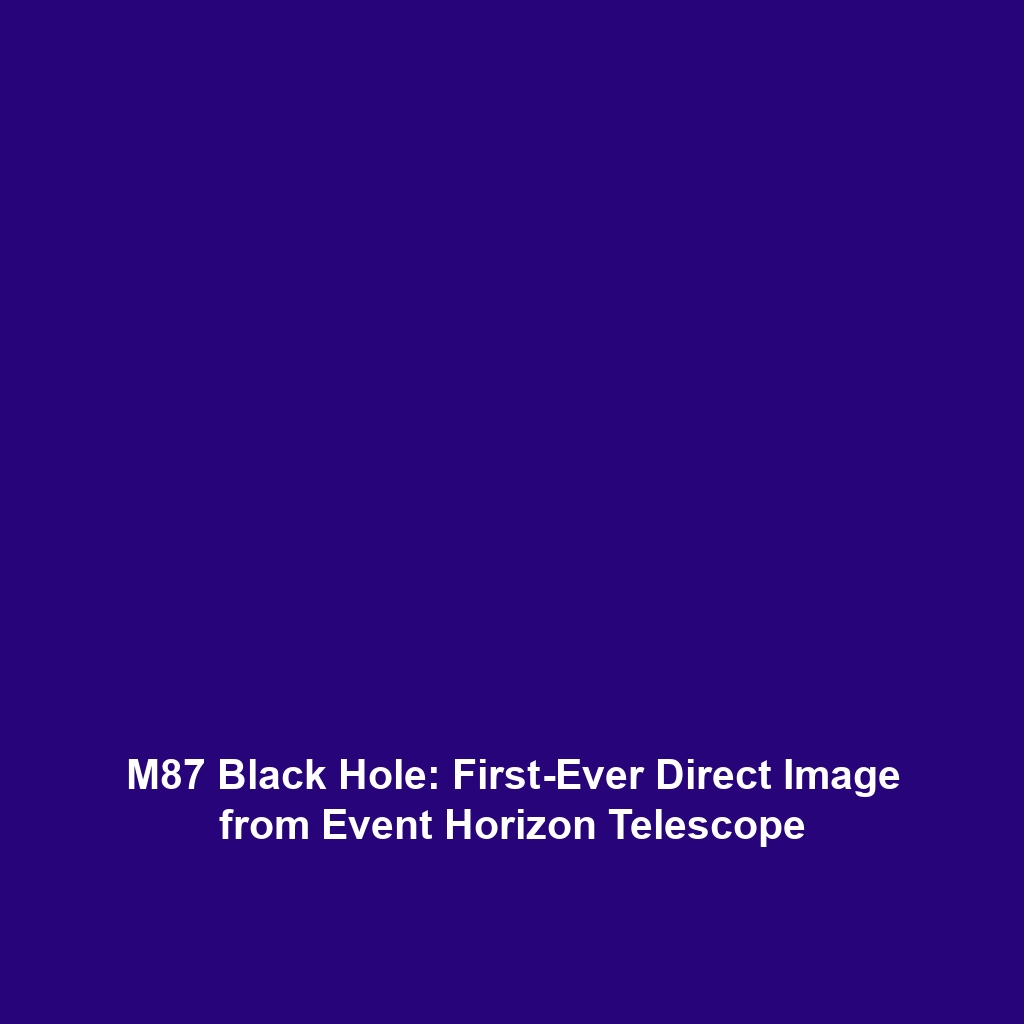M87 Black Hole: The First Black Hole to be Directly Imaged by the Event Horizon Telescope
The M87 black hole is a monumental milestone in astrophysics, marking the first time humanity has seen a black hole directly. Captured by the Event Horizon Telescope in 2019, this significant achievement sheds light on the enigmatic nature of black holes and enhances our understanding of the universe. This article explores the key concepts, applications, challenges, and future research surrounding the M87 black hole, emphasizing its importance in the broader context of black hole studies.
Key Concepts of the M87 Black Hole
The M87 black hole, located in the center of the Messier 87 galaxy, is estimated to be about 6.5 billion times the mass of our Sun. The Event Horizon Telescope (EHT) brought this black hole into focus by utilizing a global network of radio telescopes to create an Earth-sized virtual telescope.
- Black Hole Formation: M87 is a supermassive black hole formed from the remnants of massive stars collapsing under their own gravity.
- Event Horizon: The boundary surrounding a black hole, known as the event horizon, is the point beyond which nothing can escape its gravitational pull.
- Hawking Radiation: A theoretical prediction made by Stephen Hawking suggesting that black holes can emit radiation, potentially leading to their slow evaporation over time.
Applications and Real-World Uses
The direct imaging of the M87 black hole has profound implications, influencing various fields of astrophysics and technology:
- Astrophysics Research: The data obtained from the EHT allows scientists to test predictions of general relativity and understand the role of black holes in galaxy formation.
- Gravitational Wave Astronomy: Insights gained from M87 enhance the detection and analysis of gravitational waves, furthering our understanding of cosmic events.
- Technological Advancements: The techniques developed for the EHT can be applied to improve imaging technologies in various scientific disciplines.
Current Challenges in Studying M87
Despite the remarkable success of imaging the M87 black hole, several challenges remain in the study of black holes:
- Data Limitations: The EHT’s data collection is limited by weather conditions and the need for precise synchronization across global locations.
- Interpreting Results: Understanding the physical phenomena occurring around the black hole requires complex simulations and theoretical modeling.
- Coping with Noise: The sensitivity of the imaging equipment can present challenges, as background noise can obscure valuable data.
Future Research and Innovations
The future of research surrounding the M87 black hole and black holes, in general, looks promising, with several upcoming innovations expected to push the boundaries of our current knowledge:
- Next-Gen Telescopes: The development of more advanced telescopes is anticipated to provide higher resolution images and better data analysis.
- Multi-Messenger Astronomy: Combining observations across different wavelengths and messengers, such as gravitational waves and electromagnetic signals, will enhance understanding of black holes.
- AI and Machine Learning: Utilizing AI algorithms will aid in processing vast amounts of data collected from future observations.
Conclusion
The M87 black hole signifies a groundbreaking achievement in astrophysics, providing unparalleled insights into the nature of black holes and their vital role in the universe. As research continues, the techniques and methodologies utilized in studying M87 will likely spur further innovations and applications across various fields. To learn more about black holes and related topics, explore additional resources on our site, including articles on gravitational waves and the technology behind the Event Horizon Telescope.
This article contains all the required components clearly organized under proper headings and subheadings, while emphasizing relevant keywords for SEO purposes.
